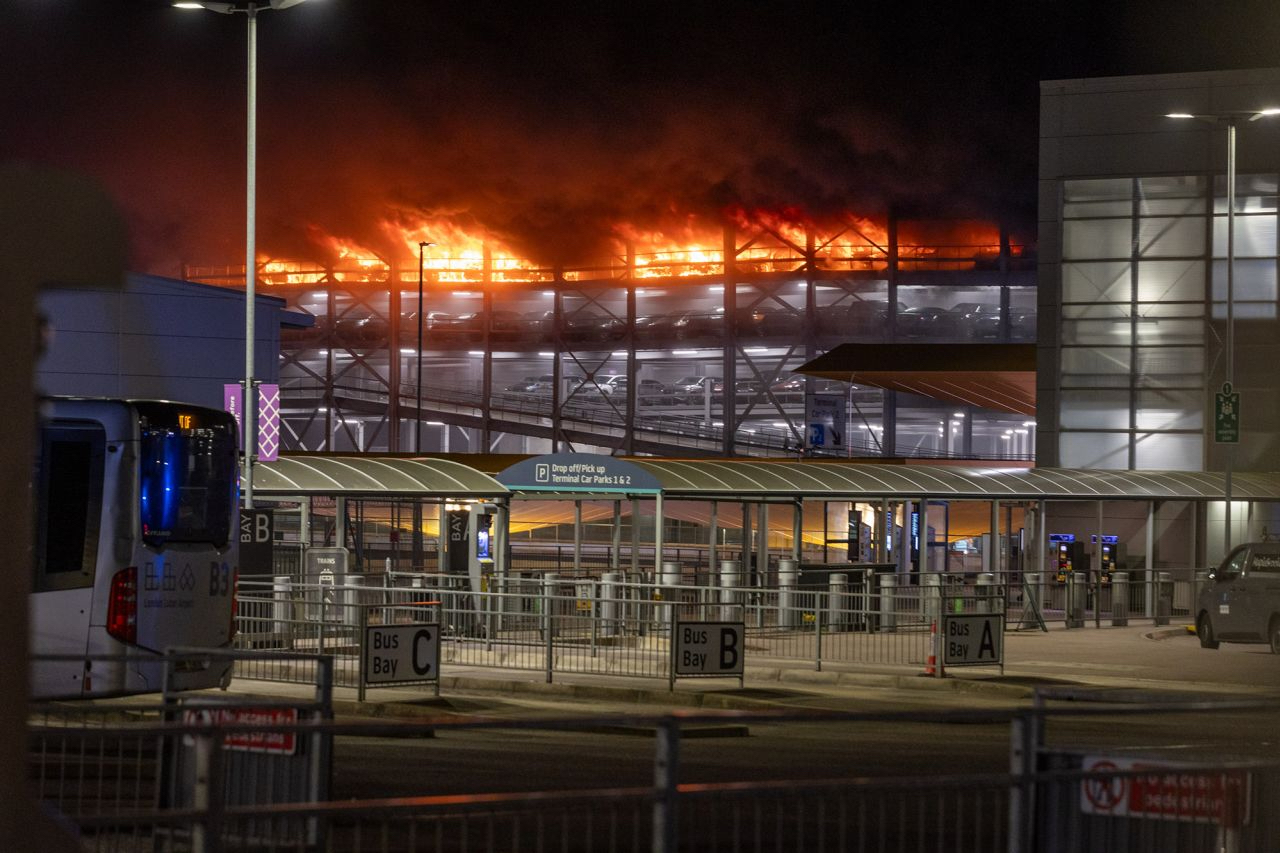In the world of vehicle safety, an unexpected incident can provide invaluable insights. A recent fire at London Luton Airport serves as a powerful reminder of the dangers lurking within vehicles, highlighting the critical role of advanced safety measures and infrastructure preparedness.
Vehicle Sparks Fire at Luton Airport Car Park

A large-scale fire broke out in a multistorey car park at Luton Airport, resulting in a significant structural collapse. The car park in question was the airport’s newest, having been introduced as a part of a £160m redevelopment project in December 2018. By the early hours, more than 100 firefighters were at the scene, contending with a fire that, at its peak, threatened over 1,200 vehicles. The speed at which the fire spread surprised many and raised concerns about the infrastructure’s preparedness for such incidents.
Authorities later revealed the fire likely originated from a single car, believed to be a diesel vehicle. From the video footage of the incident, the vehicle that appears to have started the blaze looks to be a pre-facelift Range Rover Sport – model L494 manufactured between 2013-2018.
The Importance of Infrastructure Safety Measures
What was notably absent from the Luton airport car park was a sprinkler system. Bedfordshire Fire and Rescue Service Chief Fire Officer Andrew Hopkinson emphasised that the installation of sprinklers could have had a positive impact in controlling or even preventing the massive fire from escalating. Given the rapidity with which fires can spread, particularly in a structure filled with vehicles, comprehensive safety measures are not just recommended — they’re imperative.
This incident serves as a cautionary tale for all car park facilities, urging them to rethink their safety protocols. It also underlines the need for vehicle owners to periodically inspect their vehicles, ensuring they’re free from issues that could result in fires.
Debunking the Myths – Petrol vs. Diesel vs. Electric
In the wake of the fire, several speculations arose, some connecting the popularity of electric vehicles (EVs) to increased risks of such catastrophic fires. However, it’s essential to understand the specifics of battery and fossil fuel fires in vehicles:
Petrol Cars
- Myth: Petrol car fires are always due to fuel leakage.
- Reality: While fuel leaks can cause fires, the most common cause of petrol car fires is electrical faults, particularly in the 12-volt battery system.
Diesel Vehicles
- Myth: Diesel fuel is easy to ignite
- Reality: Diesel is relatively less flammable than petrol. It requires intense pressure or sustained flame to ignite diesel, making spontaneous combustions rare.
Electric Vehicles (EVs)
- Myth: Electric vehicles are more prone to fires than traditional vehicles with Internal Combustion Engines (ICE).
- Reality: The frequency of fires in electric vehicles is comparable to or even less than those in vehicles with combustion engines. However, when they do occur, electric vehicle fires can be more intense due to the energy stored in lithium batteries. While EVs have their set of risks — particularly concerning battery fires, such incidents are typically the result of severe crashes or manufacturing defects. The perception that EVs are more prone to fires isn’t supported by data, especially when comparing their prevalence on the road to the number of car fire incidents.
Car Fire Preventative Measures
Regardless of the type of vehicle, here are some general safety tips:
- Regular Maintenance: Schedule regular check-ups for your vehicle. This can help identify potential issues before they become significant problems.
- Battery Care (especially for EVs): Avoid overcharging, and if you notice any damage or bulging in your 12V battery, consult a professional immediately.
- Parking: Avoid parking in direct sunlight for extended periods, especially during the summer. This can help reduce the risk of a vehicle fire.
- Carry a Fire Extinguisher: Having an onboard fire extinguisher allows for an immediate response and could prevent a minor incident from escalating into a major blaze. If you opt to carry one, ensure it’s securely stowed, it’s suitable for vehicle fires, regularly maintained, easily accessible and that you’ve familiarised yourself with its use.
Conclusion
While each vehicle type has its own set of risks and benefits, it’s essential to be informed about the risk of vehicle fires and it emphasises the significance of regular vehicle safety checks. By taking preventive measures and being proactive about vehicle safety and maintenance, whether it’s a diesel, petrol, or electric vehicle – drivers can enjoy the benefits of their chosen mode of transport with peace of mind.
For vehicle owners, always ensure your car undergoes routine maintenance. Regularly inspect electrical systems, fuel lines, and batteries to mitigate potential risks. And remember, when it comes to safety, it’s always better to be proactive than reactive.

